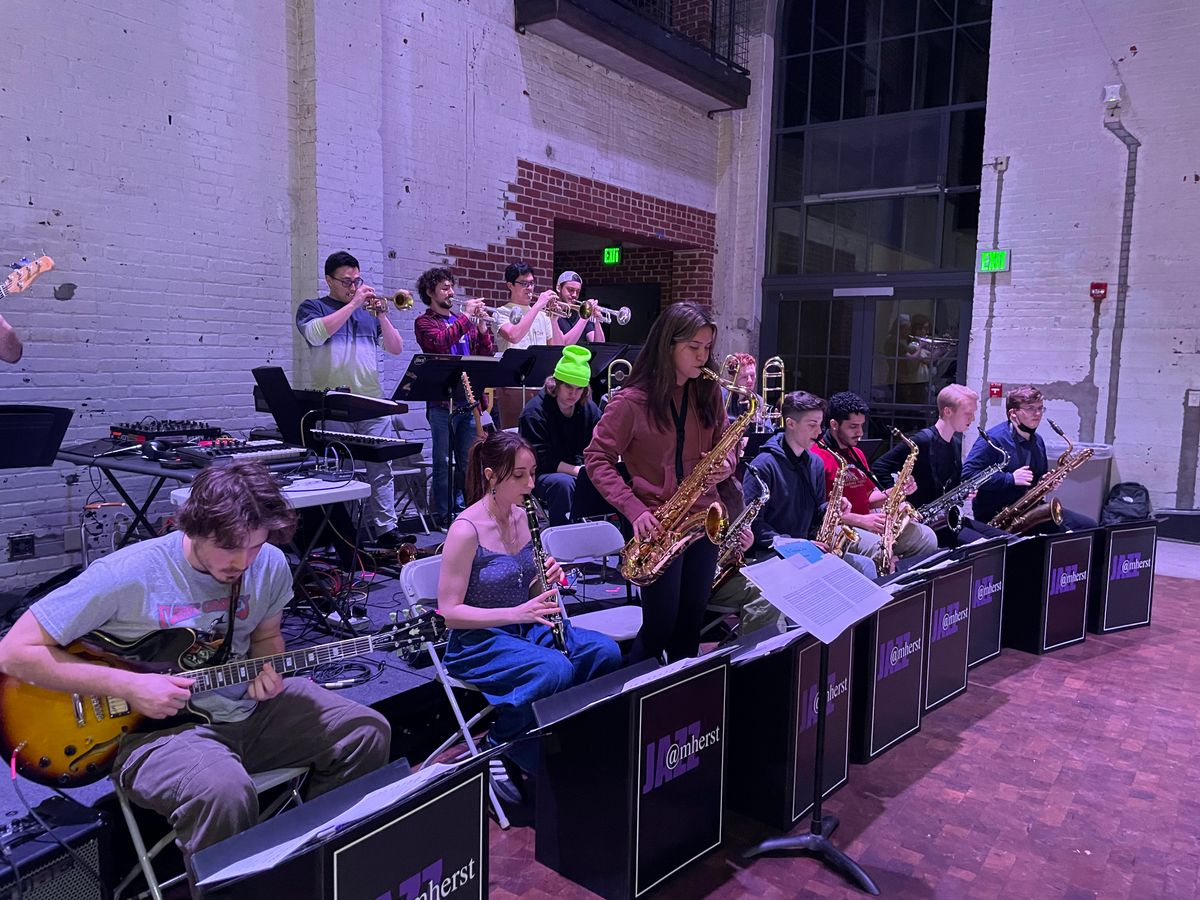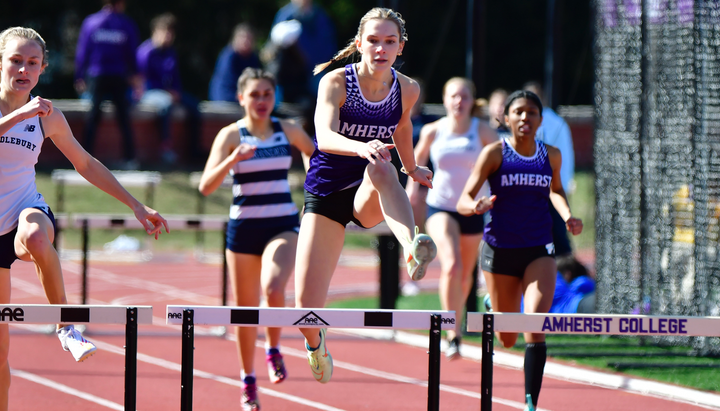A Jazzy Night: Gemini and Modality
On Saturday, the Eighmy Powerhouse hosted back-to-back performances featuring the musical ensembles Gemini and Modality. Staff Writer Davis Rennella ’24 reviews the contrasting performances, from Gemini’s evocative musical landscapes to Modality’s unorthodox improvisation.

This past Saturday in the Eighmy Powerhouse, Senior Lecturer in Music and Director of Jazz Performance Bruce Diehl performed with Amherst’s student jazz ensemble Gemini for a benefit concert on behalf of the Amherst Survival Center, a local nonprofit that provides social services for the general well-being of community members. Over one hundred students took their seats or stood along the balcony for the show, which featured some jazz standards, as well as an original composition by Virginia Tech Assistant Professor of Composition and Music Technology Charles Nichols, as part of the 2023 McBride ’59 Jazz Commission Series. Following them was Modality, Nichols’s own quartet. Diehl informed me that Modality would be playing “a very, very, very eclectic style of house indie cosmic rock kind of music.” With my imagination going haywire after this kind of description, I was keen to find out what they were all about, so I fastened my seatbelt for the music to come.
First on the docket was “Memphis Underground” by Herbie Mann. Gemini went step-by-step in crafting the groove, starting with the bass on a repeated bluesy riff, followed by the drums, and then the keys. Once the scene was set, the brass kicked down the door with an immaculate imitation of a train horn — suddenly, I was listening from an obscure backstreet by a railroad track, at a show that only those who are in the know could find. The easygoing beat continued to move forward, unbothered, alongside the chaos of the city. At one point Diehl sporadically cued in different parts of the wind section so that they each blared a different horn-like call in an orchestrated cacophony. It would have been easy to let this musical traffic jam slip into an unplanned train wreck, but Diehl coordinated the whole band to seamlessly return to measured time for the final stretch. The band then took a sudden diminuendo into abrupt silence, with no formality to speak of — the song saw itself out not with a bow, but with a mic drop.
From the first bars of the next piece, Ellen Roe’s “Point, Counterpoint,” you could feel that the band was going somewhere — and going fast. In a fast swing rhythm, the drums started the engines, and in no time we were cruising down the musical highway. What gave this song such a strong sense of movement wasn’t the tempo (which was moderately quick at most) but the rhythms. The saxophones, trombones, and trumpets all moved in and out of the melody unpredictably. True to the song’s title, each section of the winds responded to and riffed off one another — often before the previous section had even finished. I heard some hemiolas, some polyrhythms, and a whole lot of syncopation — most of the rhythmic stops were pulled on this one. We were treated to solos on tenor saxophone (Adrian Whitney ’26) and trombone (Troy Rinker), which maintained the vigor of the piece, and also from the electric bass (Avi Helft ’26) and guitar (Bodhi Liveright), which slowed the piece down and let their melodies ebb and flow over the swinging drums. Before I knew it, sinking parallel lines in the brass brought me back to a final reprise of the main melodic motifs, and the band arrived with impact on a final, sustained chord.
Charles Nichols’ original piece, “’59,” took the tone of the concert in a very different direction. Soft entrances from the drums and keys put me in a quiet, pensive mood, and extended notes from the winds added a tinge of sadness. This song also built an emotional landscape: I imagined myself in a highrise building at night, watching the bustle of the city down below and reflecting. I couldn’t pinpoint which qualities of the harmonies gave the piece such a feeling of separation from ordinary experience, but I enjoyed it all the same. There was a collection of different solos, with the first on tenor saxophone (Camila Bonilla ’26) breaking through the clouded atmosphere with a quiet lamentation. Although the soloists played with skill and conviction, the underlying tone always made one feel contentedly lost. With a gentle tap on the ride cymbal, we abruptly closed the window shades of our high-rise apartment, and, having found no answers from our midnight musings, settled for sleep instead.
The last song from Gemini in the concert, Fred Sturm’s “Song of the Rainforest,” finished the set by crafting a compelling and hypnotic musical atmosphere. The electric guitar opened the piece with a repeated riff that sounded like a chant — this quality became even more apparent once the saxophones took it up as well. Over this theme, different sections made varying contributions to the gathering of sound, with some rising high in arcing melodies that perhaps emulated the calls of birds singing in the night. At moments the harmonies got darker, and at other times the band broke out into gestures of celebration, but the underlying riffs never faltered, just like the constant hum of life ringing throughout the rainforest.
As Modality took the stage, they informed the audience that their performance would have a general roadmap, but that they would figure out how to reach their destination on the fly. They started to orient themselves by playing staggered fifths on the synthesizer. These arpeggios gradually got faster, twisting around themselves while the other members of the group, on electric violin, electric guitar, and keys, added layers to what became a swelling ocean of sound. The sound effects on the instruments lent a space-age feeling to the piece; I was reminded at times of the colorful visual sequence towards the end of “2001: A Space Odyssey.” Over the course of about ten minutes, this texture rose to a climax of volume and complexity, then slowly descended back down to the simplicity that began the piece. Each of their songs adjusted the tone and timbre of the instruments, but the overall texture remained similar.
I would have liked to see the group go further with their improvisation and work more as an ensemble — sometimes it didn’t feel like the experimentations of each player really built off one another, but merely coexisted. Their methods were certainly original and provided a groundwork for a very different type of listening: I was struck by how the piece developed not through addition of new and changing elements, but through one singular motion, like a storm moving in.
The concert was, overall, a great experience, and thanks to the creativity of everyone involved, I felt that I learned some new things about music that I couldn’t have gleaned anywhere else. Try to catch Gemini, or another one of Bruce’s groups, while you’re at Amherst — they’re well worth your time.




Comments ()